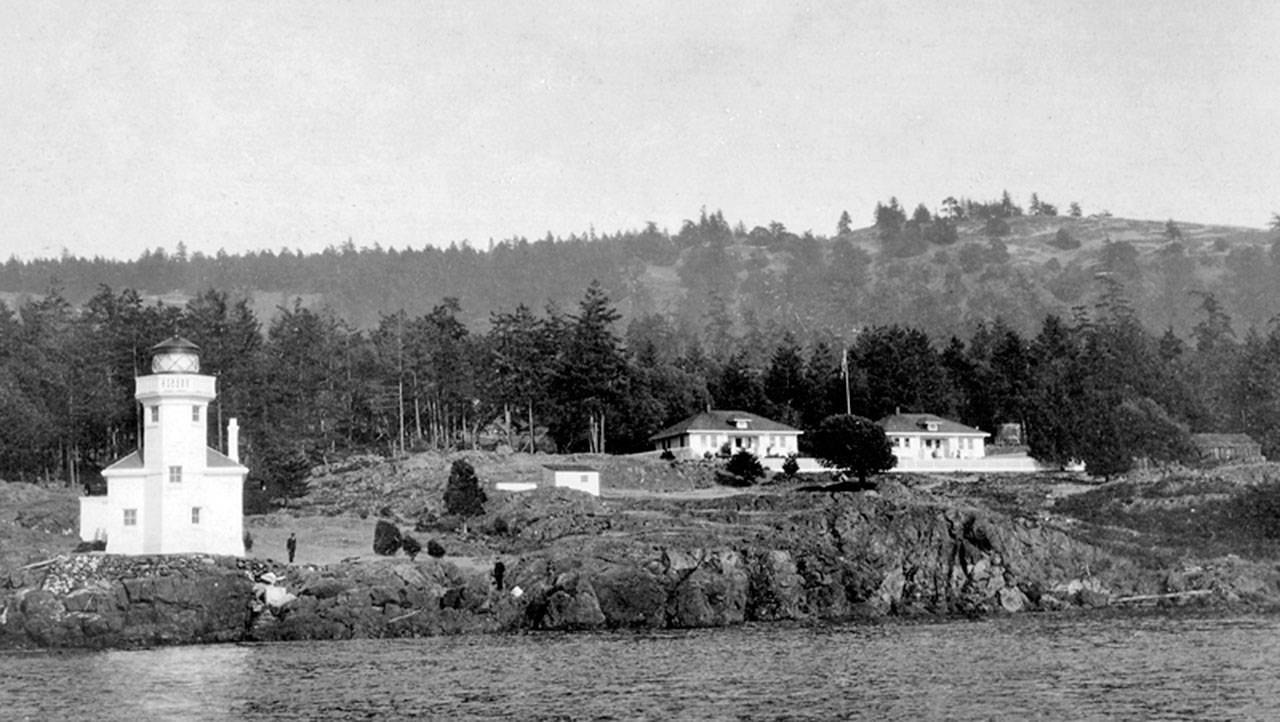The Lime Kiln Lighthouse has become more than a navigational necessity: it’s an icon for San Juan Island. As the famous landmark approaches its centennial in 2019, Erin Corra, the founder and executive director of the Friends of Lime Kiln Society, is planning a celebration to commemorate its many meanings.
“The lighthouse is an epicenter for research, education and inspiration,” she said. “It’s a wonderful opportunity to celebrate the lighthouse and all it means.”
Corra has scheduled educational opportunities around the lighthouse since she founded FOLKS in 2011 to support and sustain the state park where the lighthouse resides. Staff from Wolf Hollow Wildlife Rehabilitation Center are often onsite on Saturdays during the summer to answer questions about local wildlife.
For researchers like Val Veirs, the area surrounding the lighthouse is a prime spot to track underwater sounds made by the resident orcas that call the waters around San Juan Island home.
“It’s probably the best place to look for whales in the world when looking over that beautiful blue water,” said Veirs, who noted that the orcas were not seen locally as much last summer.
Veirs founded www.orcasound.net about a decade ago to stream southern residents killer whale audio online to decipher the different vocalizations’ meanings. He started his research at Lime Kiln Point State Park by installing additional hydrophones near the lighthouse in the late 90s. The Whale Museum staff and volunteers had hydrophones at the site since 1983.
A hydrophone is an underwater microphone that researchers, like Veirs, use to record and study the southern resident killer whales, which have been listed as endangered under the Endangered Species Act for about 12 years.
Veirs often notices the contrast between Lime Kiln Point State Park’s land and surrounding waters.
“It’s a wonderful place to try to close the loop between the visual calmness of the scenes and the clamorous of the underwater world,” he said.
The centennial celebration will coincide with the anniversary of the lighthouse’s first day of operation on June 30, 1919. According to an essay on historylink.org, it was the last major lighthouse built in the state. It was also the last Washington lighthouse to be connected to electricity. The lighthouse operated with an incandescent oil-vapor lamp until 1951, when it was replaced by a lens that used an electric light bulb.
Both the lighthouse and state park are named after the lime kilns built in the area in the 1860s. Two buildings to accommodate the lighthouse’s managers were erected during the construction of the original structure and are still located behind it. One was for the keepers’ family, said Corra, and the other for the assistant’s.
According to the historylink.org essay, the keepers alternated 12-hour shifts, seven days a week, for an $800 annual salary until the lighthouse was automated in 1962 by the U.S. Coast Guard.
Today, the beacon flashes every 10 seconds, illuminating over 17 miles of sea, but Corra said the site emits a call far beyond that; it receives more than 350,000 visitors annually, from roughly 40 different countries.
In a video on www.tvw.org, the former Secretary of State of Washington Ralph Munro explained that the state acquired the land from the President Ronald Reagan administration in 1984 for $1, which helped to maintain the local site for generations to come.
That, said Corra, has been her plan since she first started working for Lime Kiln Point State Park in 2007, and lived in one of the former lighthouse keepers’ homes, where she often heard whales pass through the night.
“We love our lighthouse,” she said. “It’s so iconic to the San Juans.”
To donate to the event, visit folkssji.org/donate and include a note, designating the contribution towards the event. Or mail a check, payable to Friends of Lime Kiln Society, PO Box 1361, Friday Harbor, WA 98250.



